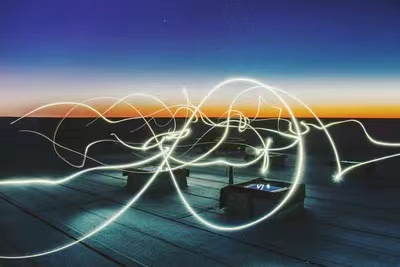创新背景
心房纤颤(AF)是一种心脏疾病,它会导致心率不规律和异常快,可能导致血栓、中风、心力衰竭和其他心脏相关的并发症。尽管AF的病因尚不清楚,但它影响着英国约100万人,预计病例还会增加,给英国国民健康服务体系带来巨大成本。
目前,房颤的诊断通常通过心电图进行,但心电图只能在发作时进行,因此需要辅助的诊断手段。
房颤是通过一种名为“导管消融”的外科手术来治疗的,这种手术仔细地破坏心脏的病变区域,以中断异常的电路。在50%的病例中,患者需要进一步治疗。
创新过程
这项由伦敦大学学院(ucl)开发的技术的测试表明,它可以成功地对模拟生物组织的溶液的导电性进行成像,因此,可以用于诊断房颤,并确定应该进行手术的心脏区域。它的工作原理是将心脏的电导率绘制成2D图,以识别心脏不工作的异常部位。
“治疗心房纤颤的手术有效地切断了导线,以防止心脏短路,将不规则的心跳重置为正常的心跳,我们的技术将有助于识别短路的位置。虽然目前还不能在临床中使用,但我们首次表明,在室温下,在小体积下绘制活组织的导电性,达到前所未有的灵敏度水平是可能的。”

该团队使用带有交流磁场的非屏蔽原子磁强计对溶液进行成像,其电导率与活组织的电导率相当,灵敏度为0.9西门子每米,分辨率为1厘米。这些溶液体积均为5ml,以满足AF诊断的预期应用需求。这个信号是用基于铷的量子传感器检测到的,该团队专门开发了这种传感器,可以在几天内准确、持续地对小体积图像进行成像,亮度区域表示高导电性。能够以低于每米一西门子的速度检测电导率,比以前的成像结果提高了50倍,表明该技术足够敏感和稳定,可以用于在无屏蔽的环境中对生物组织进行成像。

该研究的合著者兼小组负责人Ferruccio Renzoni教授(伦敦大学学院物理与天文学)说:“电磁感应成像已经成功地用于一系列实际应用,如无损评估、材料表征和安全筛选,但这是它首次被证明可以用于生物医学成像。我们认为使用它是安全的,因为它会使器官,比如心脏,暴露在核磁共振扫描仪常用磁场的十亿分之一中。
“我们已经在无屏蔽的室温环境中达到了惊人的灵敏度水平,这使我们距离将这项技术带到临床更近了一步。这只有通过使用量子技术才可能实现,我们对其在改善心房纤颤临床结果方面的潜在应用感到兴奋。”
该团队设想将他们的量子传感器阵列放置在心脏上方,在几秒钟内给出读数。下一步,该团队将与临床医生合作,将该技术集成到全科医生外科和医院使用的工具中。
创新价值
这项技术可以成功地对模拟生物组织的溶液的导电性进行成像,因此,可以用于诊断房颤,并确定应该进行手术的心脏区域。
创新关键点
该团队使用带有交流磁场的非屏蔽原子磁强计对溶液进行成像,其电导率与活组织的电导率相当,灵敏度为0.9西门子每米,分辨率为1厘米。这些溶液体积均为5ml,以满足AF诊断的预期应用需求。这个信号是用基于铷的量子传感器检测到的,该团队专门开发了这种传感器,可以在几天内准确、持续地对小体积图像进行成像,亮度区域表示高导电性。能够以低于每米一西门子的速度检测电导率,比以前的成像结果提高了50倍,表明该技术足够敏感和稳定,可以用于在无屏蔽的环境中对生物组织进行成像。
创新主体
伦敦大学学院(University College London,简称:UCL ),1826年创立于英国伦敦,是一所公立研究型大学,为伦敦大学联盟的创校学院、罗素大学集团和欧洲研究型大学联盟创始成员,被誉为金三角名校和“G5超级精英大学”之一。
UCL是伦敦的第一所大学,以其多元的学科设置著称,于REF 2014 英国大学官方排名中,位列全英之冠,享有最多的科研经费。UCL的医学、解剖学和生理学、建筑学、教育学、考古学、计算机科学、计算金融学等学科排名均位居世界前列,与LSE并称为“英国现代经济学研究的双子星”;其人文学院颁发的奥威尔奖则是政治写作界的最高荣誉。
Innovative quantum technology for diagnosing and treating heart disease
Tests of the technique, developed at University College London (UCL), have shown that it can successfully image the electrical conductivity of a solution that mimics biological tissue and, therefore, can be used to diagnose atrial fibrillation and identify areas of the heart where surgery should be performed. It works by mapping the electrical conductivity of the heart in 2D to identify abnormal areas where the heart is not working.
"Surgery to treat atrial fibrillation effectively cuts the lead to prevent a short circuit in the heart, resetting an irregular heartbeat to a normal heartbeat, and our technique will help identify the location of the short circuit. Although not yet available for clinical use, we have shown for the first time that it is possible to map the electrical conductivity of living tissue at room temperature and in small volumes to unprecedented levels of sensitivity."
The team imaged the solution using an unshielded atomic magnetometer with an AC magnetic field with an electrical conductivity comparable to that of living tissue, with a sensitivity of 0.9 Siemens per meter and a resolution of 1 centimeter. The solution volumes were all 5ml to meet the expected application requirements for AF diagnosis. The signal was detected with a rubidium-based quantum sensor that the team specifically developed to accurately and consistently image small volume images over several days, with areas of brightness indicating high electrical conductivity. The ability to detect conductivity at a rate of less than one Siemens per meter, a 50-fold improvement over previous imaging results, demonstrates that the technique is sensitive and stable enough to be used to image biological tissues in an unshielded environment.
Professor Ferruccio Renzoni (UCL Physics and Astronomy), co-author of the study and team leader, said: "Electromagnetic induction imaging has been successfully used for a range of practical applications such as non-destructive assessment, material characterization and safety screening, but this is the first time it has been shown to be useful for biomedical imaging. We think it's safe to use because it exposes organs, such as the heart, to a billionth of the magnetic field commonly used in MRI scanners.
"We have achieved an amazing level of sensitivity in an unshielded room temperature environment, which brings us one step closer to bringing this technology to the clinic. This is only possible through the use of quantum technology, and we are excited about its potential application to improve clinical outcomes in atrial fibrillation."
The team envisions placing their array of quantum sensors above the heart to give readings in seconds. The next step is for the team to work with clinicians to integrate the technology into tools used in GP surgeries and hospitals.
智能推荐
量子计算+原子物理 | 创新利用“碱土原子”实现量子特定计算
2022-10-24加州理工学院的一个量子物理学家团队在使用一种更复杂的中性原子(位于元素周期表第二列的碱土原子)的研究上取得了进展。
涉及学科涉及领域研究方向量子计算+机器学习 | 新型量子化学工具”OrbNet”可使量子计算提速
2022-10-20研究人员开发了一种新型工具”OrbNet”,可使量子化学计算的执行速度比以前快了1000倍,从而使精确的量子化学研究比以往任何时候都更快地进行。
涉及学科涉及领域研究方向新建“量子级热泵”可提高射频信号测量准确性
2022-09-06涉及学科涉及领域研究方向